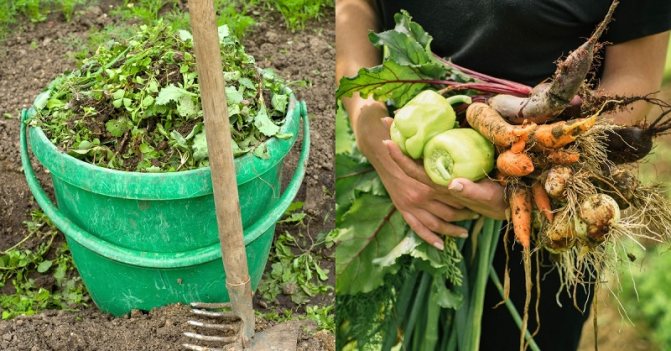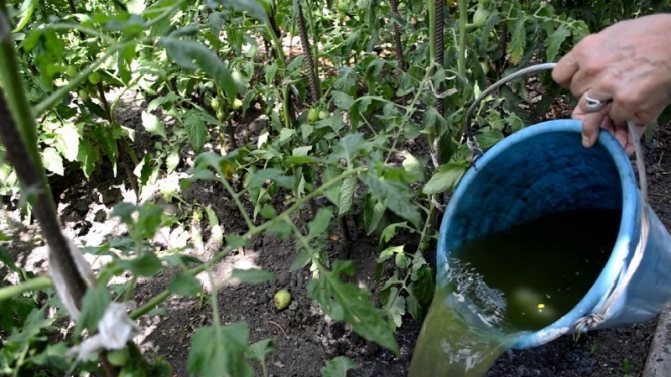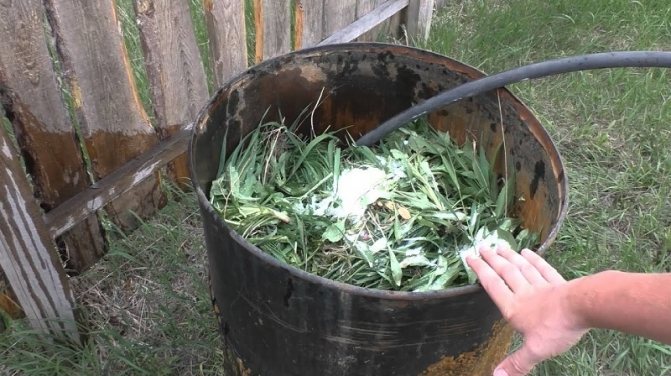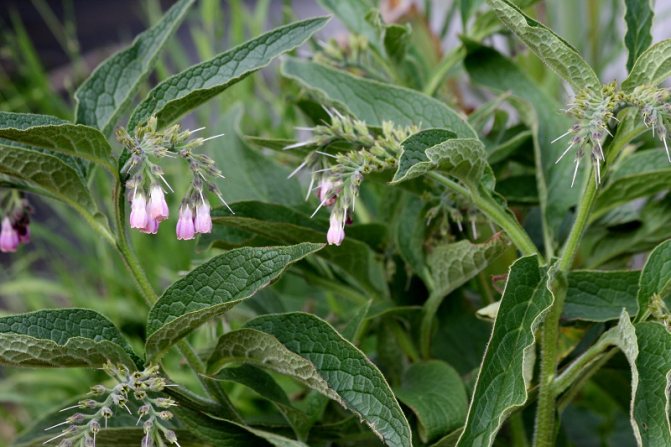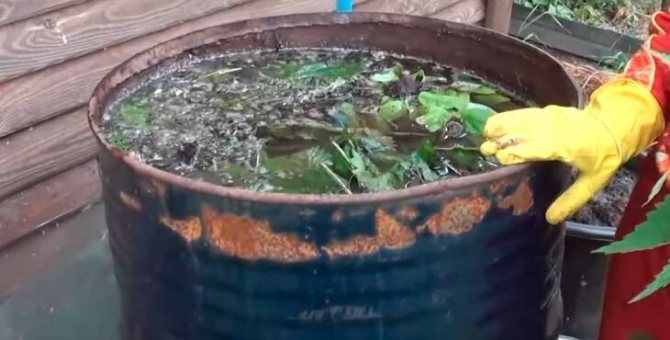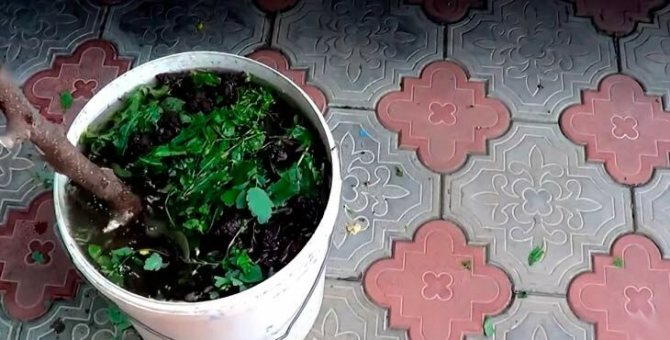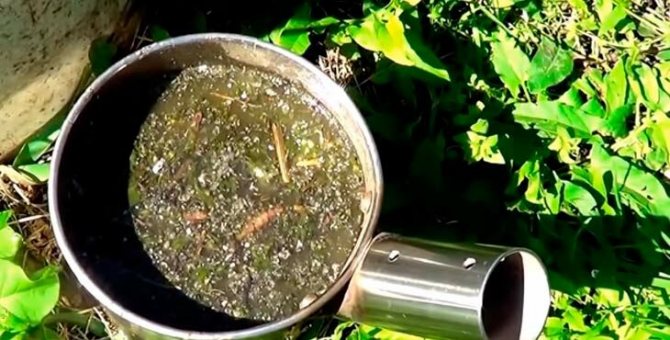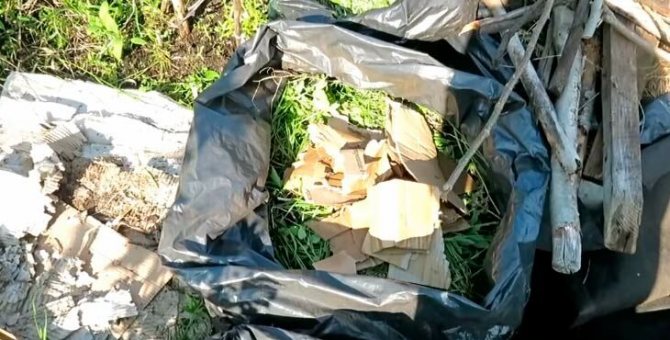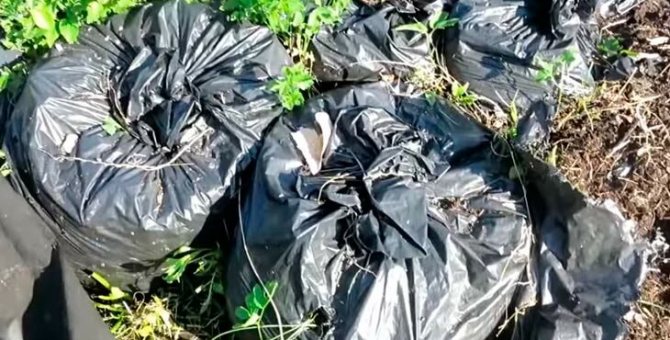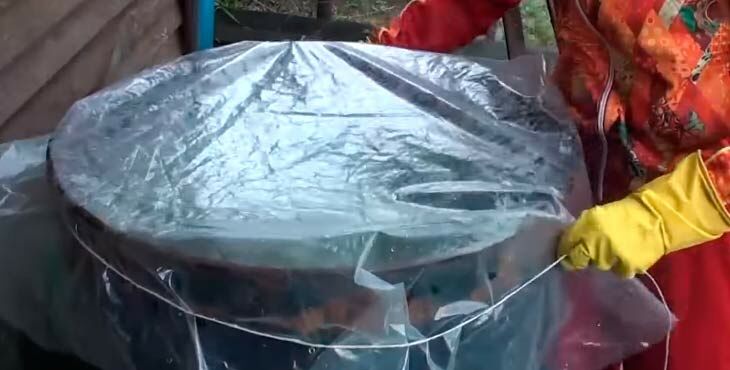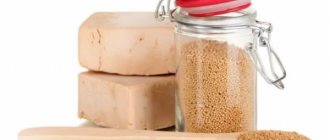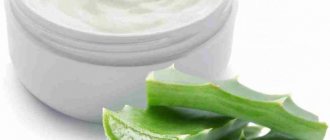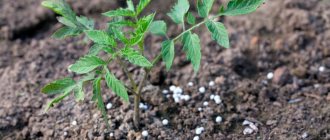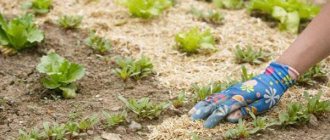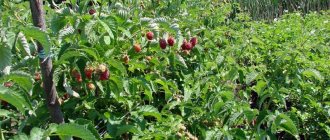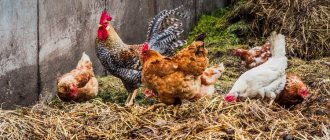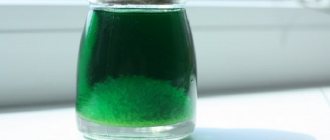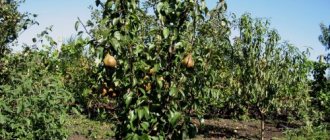Agronomists call green manure green manure, and gardeners dubbed the infusion of any herb this way, but they give special preference to nettle. It is easy to make such fertilizer, it brings a double benefit: the weeds are weeded out, and the cultivated plants are fed. But is this top dressing so good? Can she always fertilize everything?
- 2 When and how to feed
- 3 How to prepare and dilute green manure
3.1 Video: how to make fertilizer from weeds
Weed Fertilizer - How to Prepare and Apply
It often happens that future farmers take not the most fertile soils for a summer cottage. In addition, in the process of growing crops, the soil also becomes scarce, its nutritional value decreases, minerals and substances necessary for plants are lost.
Naturally, in such conditions, regular feeding is required. It is not always convenient to use mineral fertilizers for these purposes, since they are slowly absorbed by plants, sometimes it is difficult to calculate the optimal dosage, which causes the plantings to "burn".
Alternatively, gardeners resort to a little trick - they prepare top dressing on their own, and from the plant material that they find on their site. We are talking about fertilizer - an excellent substitute for manure - feeding from weeds.
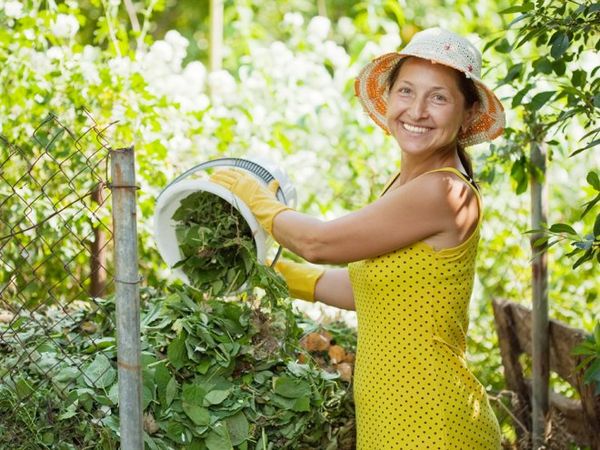
To obtain a nutrient fluid, you need only three components available to every owner of a garden or vegetable garden: water, nitrogen fertilizers, grass. As a result, 200 liters of green manure from weeds can be supplied to an area of several acres of land.
How will such natural feeding be useful?
Those who have already taken advantage of the idea of preparing such a nutritional composition note three main advantages of using it. Among them are:
- Fertilizer from grass and weeds is quickly digestible, in contrast to simple mineral fertilizers. Since the material is soaked in water, this gives a better effect compared to mulch made from rotted plant residues.
- Rapid change in soil acidity. On lands unsuitable for cultivation, it is necessary to lower the pH; a composition of weeds is an ideal tool for this purpose. Due to the alkaline reaction that occurs, the task is completed much faster than when the gardener resorts to the use of dry deoxidizers.
- Soil saturation with microorganisms. Thanks to their vital activity, a more stable immunity is formed in plants. Crops planted in enriched plots are less likely to get sick, give a good and high-quality harvest, since, in general, their nutrition improves during growth.
Also, liquid weed fertilizer can be used in preparation for planting various plants in the spring. Thus, the container with the ready-made composition becomes an indispensable assistant for the gardener throughout the season.


It is recommended to place the barrel where the grass will be folded in the middle of the field so that you do not have to waste time and effort transferring liquid to a distant part of the site.
Another important advantage of such a home-made unit is that it is a kind of disinfection chamber.It is perfectly acceptable to throw grass and diseased plants infected with various microorganisms into the barrel. They will undergo processing inside the solution, being for a long time in anaerobic conditions, thereby dying. Otherwise, the damaged crops would have to be burned.
Briefly about the benefits of weed fertilization
The benefits of liquid feeding
Despite the fact that almost any top dressing can be purchased in specialized stores, liquid weed fertilizer is very popular among gardeners. There are several good reasons for this:
- The preparation of the nutrient solution does not require material costs. This fact should be taken into account if necessary to fertilize a large planting area.
- Nitrogen, contained in liquid form, is absorbed by plants faster and easier, in comparison with commercial preparations.
- Liquid grass dressing has an alkaline environment that deoxidizes the soil. It is especially useful to use infusion of weeds on clay soils.
- Microorganisms that make up the finished top dressing help to improve the structure of the soil, making it looser and more oxygenated.
- The use of herbal infusion helps to suppress the growth of weeds and protect plants from diseases.
In addition to the advantages listed above, there is another important plus in the preparation of liquid green dressing. Diseased plants that are recommended to be burned can also be used for infusion. Pathogens die in an anaerobic environment.
The disadvantages of liquid weed fertilizer include a pungent unpleasant odor that appears as a result of grass fermentation. In addition, there are restrictions on the use of some plants. For example, field bindweed releases toxic substances when decomposed.
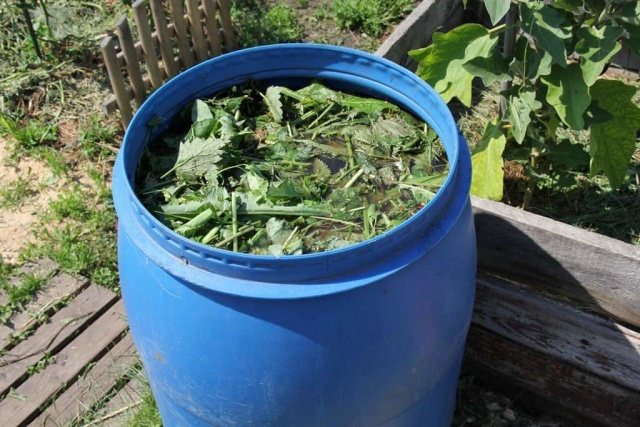

How to make a liquid weed feed
First of all, before preparing an organic fertilizer, you will need to acquire a suitable container of the required volume. It is desirable that it be a plastic tank with a tight-fitting lid. You can also take metal barrels, but then it is worth considering that they rust too quickly when interacting with water, and besides, it is necessary to build a stand for such a container.
The minimum volume of the tank is 50 liters, but it is better that it is a standard 200 liter capacity.
Next, plant material is selected for future feeding. In this regard, the most profitable option is grass, weeds and tops, that is, the so-called "green mass". They are a priority, since they ferment best, therefore, it is possible to obtain high-quality fertilizer.
- The barrel is filled with grass by half or 2/3, if there is enough material, then a full tank can be poured. The more weeds, the thicker the top dressing will be.
- To ensure fermentation and speed up the solution preparation process, nitrogenous fertilizer is added. Due to the fact that there is a lot of fiber in plants, they are poorly processed, since a not very favorable environment is formed for bacteria. The presence of nitrogen will accelerate the reproduction of microorganisms and, in general, the fermentation process.
- As a nitrogenous fertilizer, both ready-made dressings sold in stores and a small amount of waste from the toilet (volume - 1-3 liters per barrel) are suitable. It is also allowed to use urea (carbamide) - you need to add only a tablespoon or humate fertilizer in liquid form (a few milliliters).
- At the final stage, the barrel is filled with water, leaving a few centimeters on top, and covered with a lid or polyethylene. After two weeks, the weeds can be used as fertilizer. Subsequent batches will be ready for use in the garden a little faster - in 7-10 days.
Both the herbal mass and the liquid component are suitable as a nutritional composition. The first is used for mulching cucumbers, cabbage, pumpkins, and the solution is used for watering crops.
Also, do not forget that liquid should remain at the bottom of the tank, about 2 buckets. It is necessary to start a similar fermentation process a second time. Then the procedure is repeated: the barrel is filled with grass, nitrogen is added in the required amount, water is poured. In hot weather, the starter culture goes faster under the influence of high temperature, so the feeding will be ready already on the 7-10th day.
Important components
And now let's dwell on the important components of the solution:
- Nettle. For the best effect, it is advisable to add nettle - it is rich in silicon and a number of trace elements.
- Hay. Fresh hay will be an excellent ingredient in preventing fungal diseases in your plantings. Before adding to the barrel, fill it with hot water and, after it has cooled down, place in the bulk. The active reproduction of the hay stick will begin, and you will eventually get an almost equivalent replacement for phytosporin, the enemy of pathogenic microorganisms.
- Yeast or crackers. Another great remedy for fungal diseases is yeast or rye bread crumbs. 10 g of yeast is enough for a barrel. Crackers - 0.5 kg. Wet yeast - 50 g.
- Bone meal or eggshell. A few pounds of bone meal will add calcium to your homemade fertilizer. An alternative is well dried and ground eggshells. A suitable dosage is 1/2 bucket per barrel.
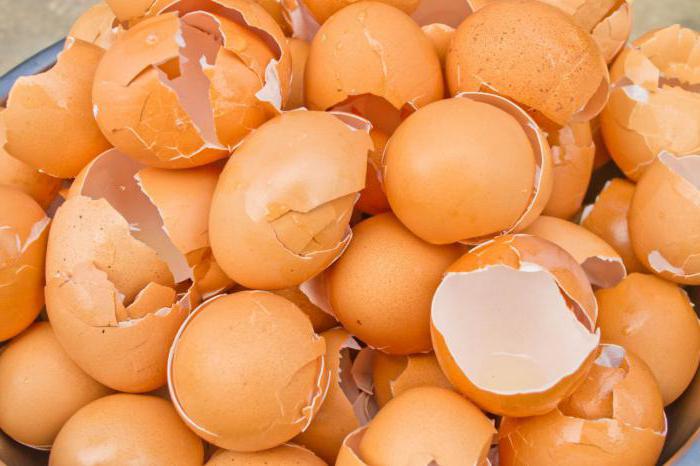

We now turn to certain recipes for infusions obtained from experienced gardeners.
How to determine when weed fertilizer is ready
You can find out that it's time to use organic matter by its characteristic features:
- the presence of a "barn" smell from a container, rotted grass;
- the water changes color and becomes greenish or brownish;
- bubbles appear on the surface due to the release of carbon dioxide during fermentation.
Thus, the appearance of bubbles indicates that the plant mass is undergoing a stage of rapid decomposition with the release of ammonia and carbon dioxide. It is worth noting that a positive feature of feeding from weeds is the presence of ammonia in the water, which, interacting, forms ammonia, which cannot be achieved when processing and preparing manure or compost. Due to the fact that ammonia is retained in the liquid, it is possible to use it for effective deoxidation of poor-quality soils.
Read also: Perennial arugula: varieties and species with descriptions for open ground and greenhouses photos
Organic fertilizing turns out to be more profitable than conventional mineral fertilizers. The fact is that ammonium ions have a positive charge, which contributes to their settling and retention in clay soil, the particles of which are negatively charged.
Thus, green liquid top dressing is applied in the autumn months, as the nitrogen is slowly washed out. As for the purchased mineral fertilizers in granules, the main component there carries a negative charge, therefore it is quickly removed from the soil.
Other organic fertilizers:
Potato peels, animal dung, wood ash, or fallen leaves can be used as organic fertilizers. With proper preparation of top dressing, the yield of the soil will increase by almost 2 times.
How to make a top dressing from weeds - step by step instructions
Rules for the use of weed dressing
The infusion of weeds as a fertilizer is suitable for feeding both with full enrichment of the soil, and with the preparation of beds and fields. Particular accuracy is not needed when diluting the solution, usually they adhere to the proportion of 1:10 for watering at the root and 1:20 for foliar application.


The dosage for each plant is selected individually.
- So, cabbage and cucumbers are fertilized in August, pouring it into a bucket of composition under a bush.
- If you need to feed strawberries, then take 1-2 liters per 1 seedling.
Despite the fact that the infusion is organic and made from natural ingredients, it is worth considering that it contains a lot of nitrogen. An overdose of this substance will lead to the appearance of diseases and the formation of unnecessary tops.
Closer to autumn, the procurement of liquid fertilizer continues. Now, in addition to grass, you can also add tops to the barrel. The resulting mixture is watered all parts of the field, where young plants will be planted in spring.
When and how to feed
Top dressing with green fertilizer is equivalent to the introduction of manure, compost or humus, it contains mainly nitrogen. This element is necessary in the early growing season to build up the green parts of the plant (tops, leaves, shoots). And during the periods of flowering and fruiting, other fertilizers are needed - with a predominance of potassium and phosphorus.
As for the dosages, the flow rate of the infusion should be the same as when watering with clean water. But it is brought in on wet ground.
- If the soil is dry, water so that the entire layer of the earth, in which the nourishing roots are located, becomes wet. In almost all plants, the bulk of the small suction roots are in the upper 30 cm. For trees and shrubs, you will have to make ring trenches at such a depth along the periphery of the crown and shed along them.
- Apply the top dressing at the same rate as for regular watering with clean water. For example, 0.2–0.5 liters is enough for a cucumber seedling with 2-3 leaves, 1.5–2 liters for an adult strawberry bush, and a bucket per running meter of a ditch under a tree.
- After feeding the beds, lightly pour clean water again so that the fertilizer goes to the roots and does not remain on the surface. Bury grooves around trees and bushes.
Frequency of application:
- For seedlings, cucumbers, root vegetables, cabbage before flowering, the beginning of the filling of tubers, heads of cabbage - every 7-10 days.
- Under bushes, trees, strawberries - once before flowering, when there is an active growth of greenery.
- With dill, onions, parsley, sorrel, salads at the beginning of the growth of leaves and after each complete cut. During the periods of collecting greens, it is not worth watering with an unpleasant-smelling fertilizer.
You can alternate root and foliar feeding.
Do I need feeding with infusion of weeds in the fall?
It is not recommended to fertilize shrubs and fruit trees with organic and nitrogen additives. You can use the slurry in late autumn, when the foliage has fallen. The solution is introduced along the near-trunk circle of trees and shrubs, perennials. Nitrogen saturation for winter causes poor resistance to cold and freezing of crops.
If you start harvesting green dressing at the beginning of summer, then within 3 months it will be possible to prepare about 6 tons of solution in one barrel.
How and with what to process trees?
Fertilizer shelf life
As mentioned above, the liquid composition contains a lot of ammonia. This component in large quantities has a detrimental effect on living organisms, negatively affects both bacteria, plants and animals. When the concentration of ammonia in the barrel increases significantly, then the death of microorganisms that cause fermentation will begin, since they are poisoned by the products of their own vital activity.
Such a solution, even after 3-4 weeks, will be nutritious, but there will no longer be living bacteria in it. Thus, in order to constantly have a supply of fresh feeding, you need to regularly remove the old slurry and add grass. Use weed fertilizer for lawns, fruit crops, trees and shrubs.
Grass and Weed Fertilizer
Taking care of their garden, many owners destroy weeds in large quantities, without thinking that they can be useful in something. But the "extra" greens from the ridges can become a very valuable fertilizer, for this you just need to know the technology of its preparation.Admirers of organic fertilizing widely use liquid weed fertilizer for feeding various vegetable crops. We will talk about how they do it and what effect they get from it below in the article.


What grass to prepare fertilizer from
Check out these articles as well
- Poncho Treater
- What fertilizers to apply in the fall
- Onion peel
- Acaricide Masai
Fertilizer from grass is convenient because you can use a wide variety of weeds. They are simply pulled out and, without sorting, are immediately used to prepare nutritious feeding. But nettle is especially useful for cultivated plants, as it contains many valuable elements.
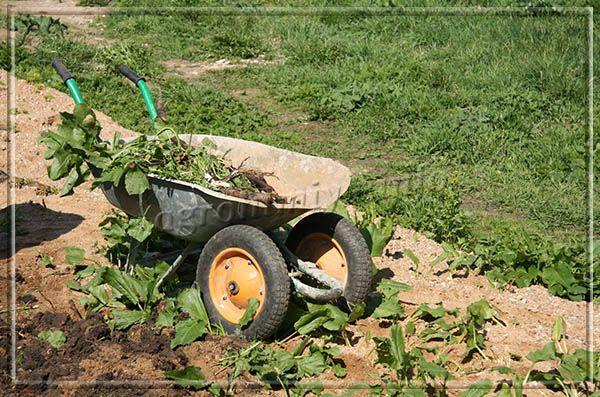

Weeds are simply pulled out and, without sorting, are immediately used to prepare a nutritious top dressing.
The container in which the fertilizer will be prepared should be roomy. Most often, the nutrient is made in a barrel, troughs. It is impractical to interfere with it in a bucket - you will get a little liquid.
Important!
Not only weeds, medicinal herbs like nettle, but also tops of garden crops, straw can be used for fertilizing from grass.
Other components can be taken as additional ingredients. It is believed that a fertilizer made from greens and yeast is highly effective. You can replace yeast with the pulp of black bread, breadcrumbs. You can also add whey, egg shells, banana peels to such a fertilizer - they will increase the nutritional value of the concentrate.
Are all herbs good
In the garden, you can find various types of weeds. All of them are suitable for the preparation of "green" fertilizer. Clover, wood lice, dandelions, euphorbia and other freshly cut greens can be safely combined in the preparation of one organic dressing. It is important to note that nettle is a particularly valuable ingredient. This weed, during fermentation, releases a record amount of safe nitrogen, which, when applied to the soil, stimulates the growth of vegetable crops.
An additional benefit of nettle is that it attracts earthworms when it is in the soil. In the course of their life, they loosen the soil, make it airy, light, saturating the plant roots with oxygen.


What do you need to make a top dressing from grass?
To prepare a nutritional formula, you will need:
- Plastic or wooden container. The volume depends on the desired amount of the finished product.
- Chopped greens. This can be freshly cut or slightly dried grass, weeds and tops from the garden, nettles and other weeds.
- Water.
- A lid or film with small holes (so that excess gases formed during fermentation come out).
- Warm place and a little time (about 2 weeks).
To speed up ripening, you can add a few tablespoons of urea or ammonium nitrate.
The weeds must be seedless.
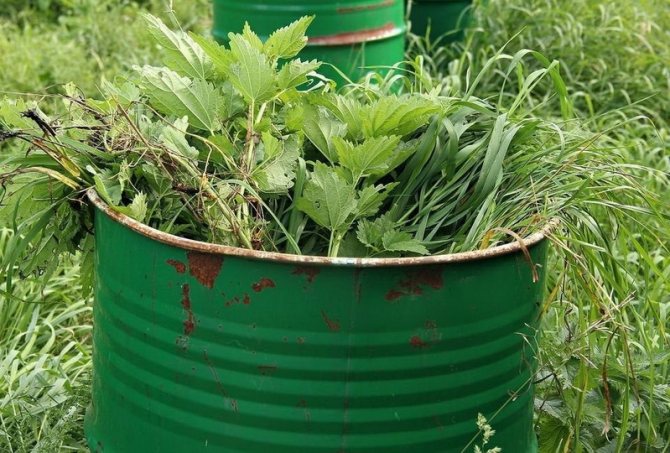

Are all herbs good?
It is contraindicated to use only field bindweed in the preparation of green fertilizer: when rotting, it releases toxic substances.
Advantages of green fertilizer
Making fertilizer from weeds requires a lot of time and effort, but gardeners still widely use such fertilizing, without replacing them with fertilizers from the store or manure. The thing is that herbal fertilizer has a number of comparative, very important, advantages:
- Availability . In the summer, grass is abundant in any garden and around the infield. For a competent owner, it is absolutely free raw material for the preparation of high-quality organic fertilizers.
- Method for the disposal of weeds. As a result of weeding a vegetable garden or mowing a lawn, the farmer receives a large amount of greenery, which can either be thrown away, burned, or laid in compost. Composting requires the preservation of some areas and a long time for maturation.The preparation of the same green fertilizer allows you to methodically and effectively solve the issue of cleaning the territory.
- High efficiency . A properly prepared fertilizer from grass and weeds is not inferior to manure in terms of its composition and effectiveness of impact on vegetable crops. Liquid herbal infusions are well absorbed by plants and do not make them wait long for the result.
- Decrease in acidity. Herbal fertilizer is characterized by an alkaline environment, due to which, when applied to acidic soils, it can reduce the corresponding indicator.
- Introduction of beneficial microorganisms. The herb infusion contains a lot of beneficial microorganisms, which, getting into the soil, improve its composition and release gases and heat. On soils saturated with beneficial microbes and bacteria, plants are less sick and grow faster.
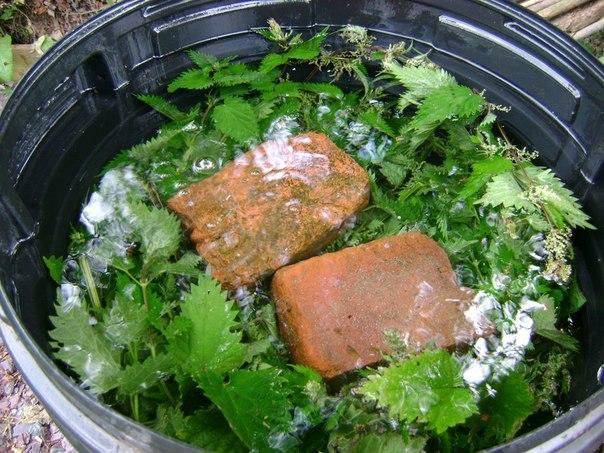

Thus, when preparing green infusion, the farmer solves two problems at once: the destruction of excess vegetation on the site and the effective feeding of vegetable crops with cheap, affordable fertilizer. Thanks to the combination of these factors, weed dressing has been popular with experienced gardeners for many years.
Siderata
mustard white
In principle, any short-growing annuals can be used for soil regeneration. The most popular in the middle lane are phacelia, vetch, white mustard, sweet clover, buttercup, lupine, wheat, sainfoin, clover, and alfalfa. They are used with equal success as predecessors of any cultivated plant, and can be of double benefit. Here you can recall the tale of tops and roots, since both of these parts of the plant will be given due attention. When cultivating the soil, decapitated roots remain in it, since green manure usually does not allow root shoots, a plant mowed under the root cannot revive, and its underground part quietly rots, enriching the soil with nitrogen. Aboveground, which forms a large volume of green mass, can be used to prepare fertilizer from grass. By using plants to nourish the soil, we replicate natural processes. Many gardeners neglect the benefits of green dressing from plant residues. But in vain. They throw away grass cuttings, tops, fallen leaves. This is not worth doing - after all, along with the biomass, useful substances leave the site. In addition, if the weeds are simply thrown over the fence, they will return, because their seeds are very tenacious.
How to make weed fertilizer
In everyday life, various recipes for the preparation of "green" fertilizers are used, which are based on the process of fermentation of herbs. You can prepare the infusion according to the classic recipe as follows:
- Pick up a container, preferably made of plastic, with a volume of 50 to 200 liters. Place it in a sunny place and provide a cover. If the container is metal, then you need to place a stand under it, which will not allow the bottom to quickly rust.
- Chop the available greens and put in a container for 2/3 or half the volume. If you wish, you can completely fill the container with herbs, but in this case it will be more difficult to mix the fertilizer during the preparation process. The amount of greens can be different, since as a result of cooking, a concentrate is always obtained, which requires additional dilution with water.
- The fermentation of the infusion can be accelerated by adding fertilizers with a high nitrogen content. For example, for every 40-50 liters of infusion, add a tablespoon of carbamide (urea). Pour the granules into the container when laying the grass, between its layers. Farmers who have a negative attitude to the use of mineral fertilizing replace urea with organic-mineral humate (1 tbsp. L. Urea = 5 ml of humate).
- After laying the filler, the container is poured with water, leaving free space (15-20 cm from the edge). This is necessary so that in the process of fermentation and decay of herbs, the solution that has increased in volume does not float over the edge of the container.
- The container with fertilizer must be covered with a lid or foil. When using the film, you need to fix its edges and make several small holes for the exhaust gases. A shelter on the container will not allow nitrogen to evaporate and will accelerate the fermentation process of the infusion. If the container is tightly packed with herbs, then it is imperative to put oppression on top.
- During the preparation of the fertilizer, foam can be observed on the surface of the solution, which is a sign of fermentation. After about 1-1.5 weeks, the foam will disappear and the color of the liquid will turn dark brown. These signs signal the readiness of feeding.
Read also: Tomato Nina: characteristics and description of the variety, photos, reviews
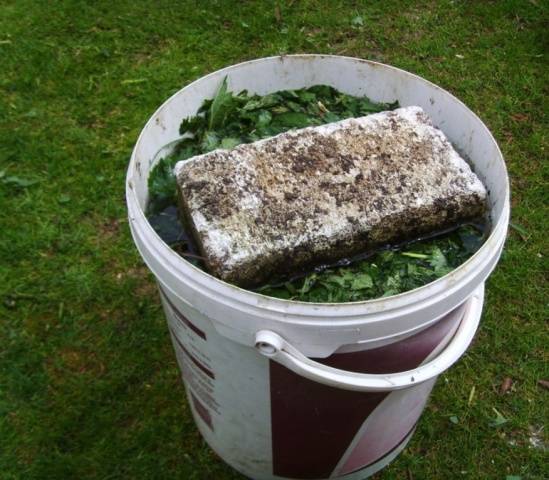

The technology for preparing green fertilizer is quite simple and accessible to everyone, it only takes a little time. Some gardeners are improving the technology by adding the following ingredients to the solution:
- Wood ash. It will saturate the green weed fertilizer with potassium and phosphorus, making it complex. The ingredient is added during the laying of the herb in the amount of 1 cup per bucket of infusion.
- Chicken manure or mullein can replace nitrogen-containing fertilizer (urea or humate).
- Bread crusts or yeast (1 kg per 200 l) activate beneficial microorganisms and add mineral trace elements to the solution.
- Dolomite or bone meal is added to a 200 l barrel of solution in an amount of 3 kg. These substances are rich in calcium and magnesium, which are involved in the process of plant photosynthesis.


The infusion of rotted plants in itself is a nutritious and extremely useful fertilizer for vegetable crops in the garden, however, adding additional ingredients to it, it will be possible to feed the plants with important microelements in the required amount.
For beginners and experienced gardeners, the information given in the video on how to prepare liquid fertilizer from weeds for feeding vegetables can be useful:
Fertilizer use
Before use, the solution in the container must be thoroughly mixed and filtered. The remaining rotted herbs are used for mulching the ridges. The liquid is diluted with clean water until a light brown solution is obtained. They are fed tomatoes, cucumbers and other vegetables, watering them at the root. It is worth noting that the use of top dressing will be more effective if the plants are well watered with plain water before applying it.
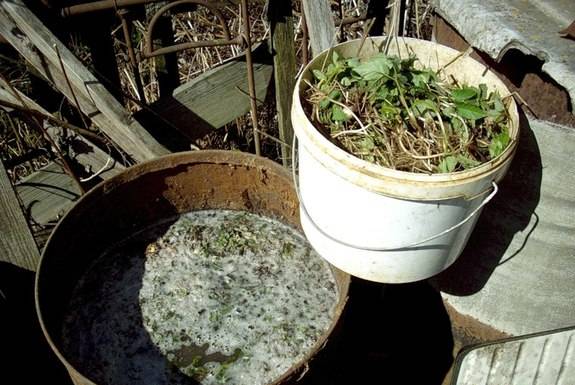

The herbal infusion can be used for foliar feeding. To do this, dilute it with water 1:20 until a clear solution is obtained. It is important to remember that green fertilizer contains a large amount of nitrogen, which means that the concentration should not be exceeded and such dressings should not be abused.
Readiness and application
When can we talk about the readiness of herbal infusion for plant nutrition? Depending on the ambient temperature, such products can be used within a week after preparation. The readiness will be indicated by a specific "aroma", as well as the formation of foam on the surface.
Planting is not fed with herbal fertilizer in its pure form, since the solution is very concentrated, which can negatively affect the roots. It is best used as follows:
- Mix the contents of the barrel thoroughly with a stick.
- Scoop up the solution, strain it from the herbs and other ingredients.
- Dilute with clean water 1:10 (infusion / water).
- Make such feeding at intervals of once every 7-10 days.
Do not wait until the solution is completely used up - as the barrel is empty, fill it with new grass and other components (except manure), fill it with water. So you will have ready-made organic fertilizer all summer long.
What to do if fertilizer remains
As a rule, a large amount of herbal infusion is prepared in order to immediately fertilize vegetable crops on the ridges, shrubs and fruit trees on the site.But, as often happens, it is impossible to use up all the fertilizer at once. It makes no sense to store the infusion in an open container for more than 1 week after the end of fermentation, since the useful nitrogen will evaporate from it, and the bacteria will die. However, in this case, you should not rush to dispose of the solution, because it can be saved. To do this, green fertilizer is poured into plastic containers and sealed hermetically. The fertilizer storage area should be cool and dark. In this state, the infusion can be stored for a long period of time without loss of quality.
Leftover liquid fertilizer can also be used as a starter culture. The infusion at the bottom of the container is saturated with beneficial microorganisms, which, when new raw materials are added, will accelerate the fermentation process. Thus, every 3-4 weeks a "fresh" infusion of weeds can be obtained for use.


For which plants is green fertilizer useful?
Since there are more than a dozen types of green fertilizer, the use in the garden is selected according to the type of crop. So it is better not to use nettle infusion actively for strawberries or sweet berries. It is suitable for cucumbers, tomatoes, cabbage.
The full development of nightshade crops is ensured with its help. At the same time, there is one caveat: the infusion is kept for no more than 7 days. Otherwise, the fruits will taste bitter.
As for the compost, it is recommended to use it for all, without exception, plant species that grow on the land. For grapes, compost is a growth activator, an immunomodulator.
But to get carried away with it for the vine is not worth it. Once a month is enough to get juicy fruits. The introduction is recommended during the growing season.
For cucumbers, zucchini, cabbage, strawberries and berry crops in general, it is better to take a general green infusion. Watering is carried out every two weeks until the ovaries appear. Further processing with green infusion is carried out no more than 1 time for 28 days.
Plants such as garlic, onions, legumes, green fertilizers are not suitable.
Benefits of Liquid Fertilizer
The advantages of this method are numerous:
- Liquid top dressing in a barrel matures quite quickly, so you can use ready-made organic weed fertilizer shortly after preparation.
- Liquid fertilizer is absorbed by plants much faster than compost.
- The nitrogen-containing top dressing quickly and effectively reduces the acidity of the soil, making it more comfortable for crops.
- Beneficial bacteria that decompose grass and weeds enter the soil along with the fertilizer, where they continue their active work, increasing the nutritional value of the soil and protecting crops from damage by diseases and pests.
The introduced top dressing has a prolonged effect: gardeners who used this technique note that the beds fed with this technology are characterized by high yields for several seasons.
Anaerobic conditions created in a barrel with a fermenting natural fertilizer create a disinfecting effect, so any organic waste that is unsuitable for composting due to its potential harm can be placed in the container (litter, diseased tops, weeds with seeds, etc.).
In an aggressive environment for them, all pathogens will die, and the seeds will decompose for fertilization.
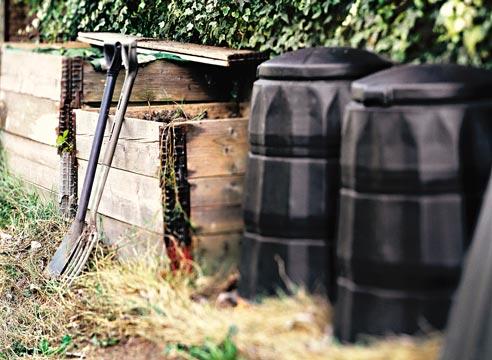

Weed fertilizer is a natural nitrogen-containing top dressing that will allow you to nourish crops and soil with the necessary elements practically without financial costs, because the “raw material” for it is always at hand.
Natural "green" fertilizer. Technology secrets
The article will be useful to those who adhere to the principles of organic farming, grow ecological (Organic-, Bio-) products on an industrial scale, or on a small farm.From the material you will learn: how to prepare a green fertilizer, which plants are suitable for it or are it, as well as how to apply natural fertilizers, getting a high-quality crop without chemicals, and how humus depends on the plants planted for organic fertilization.
Green, natural, healthy
Since the middle of the last century, the enthusiasm for "mineral water" began, and green fertilizers were almost never used.
With the revival of organic farming, which avoids the use of mineral fertilizers, believing that this deteriorates the nutritional value of products, reduces the resistance of crops to diseases and pests, the use of green fertilizers has again become important. As such, legumes and non-legumes, as well as mixtures thereof, are used.


What are natural green fertilizers for?
Natural fertilizers are designed to enrich the soil with nitrogen and organic matter. This is their main purpose. Under the influence of microorganisms, plant residues decompose and turn into humus. It is the humus of the soil that is the basis of its fertility. Its content in the soil determines the food, water and air regimes of the soil.
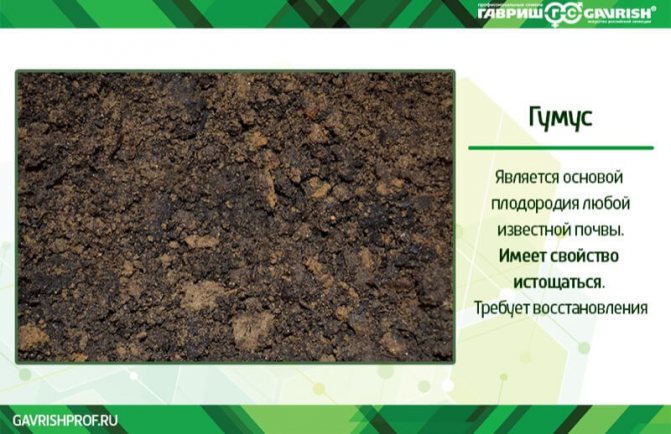

When growing cultivated plants, the humus content in the soil decreases as a result of its mineralization, therefore, a person needs to replenish the reserves of this organic component.
Green fertilizers improve the water and air regimes of the soil due to the root system, especially cereals - rye, barley.
Green fertilizers not only enrich, but also heal the soil for 5-6 years. They also allow weed control by suppressing weeds.
Green fertilizer as mulch
A mass of green fertilizer can be used as mulch. It is the organic material that covers the surface of the soil.
The purpose of mulch is to retain moisture, suppress weeds, enrich the soil with nutrients. The minimum layer of mulch is 5-8 cm, the maximum is 15 cm.
Materials for mulch are divided into two categories: coarse - straw, hay, shavings, fallen leaves, peat and less coarse - freshly cut plants and grass, weeds, which, at the same time, are also good feeding.
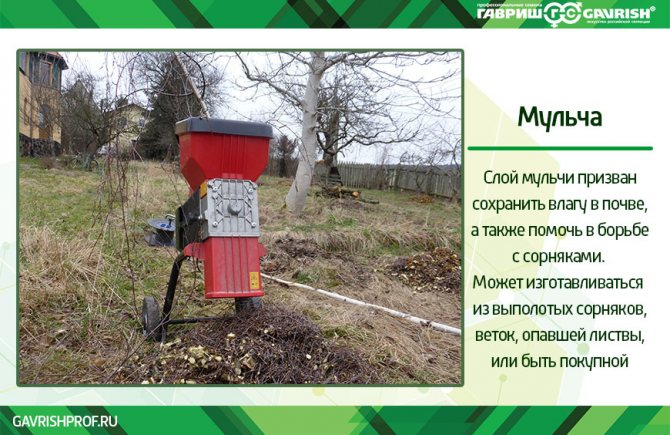

Many farmers and gardeners in Russia from year to year harvest natural fertilizers from grass and weeds.
So, mulch, with a layer of 7-8 cm from alfalfa plants, retains rainwater, inhibits the growth of weeds, keeps the soil loose, moist, cool and enriches it with nitrogen.
Humus-like compost
The mown mass of green manure is used for composting.
Composting is a microbiological process of decomposition of plant residues and the synthesis of new organic compounds from them, similar to soil humus.
In practice, green fertilizers have been used since time immemorial. The Roman scientist Pliny the Elder, who lived in the years 23-79 AD, wrote: “Everyone agrees that there is nothing more useful than lupine, if it is embedded in the soil with a plow or a two-toothed hoe before the formation of beans, or bunches of lupine cut off at the soil surface are buried near the roots of fruit trees and grape bushes ... It is as good a fertilizer as manure. "
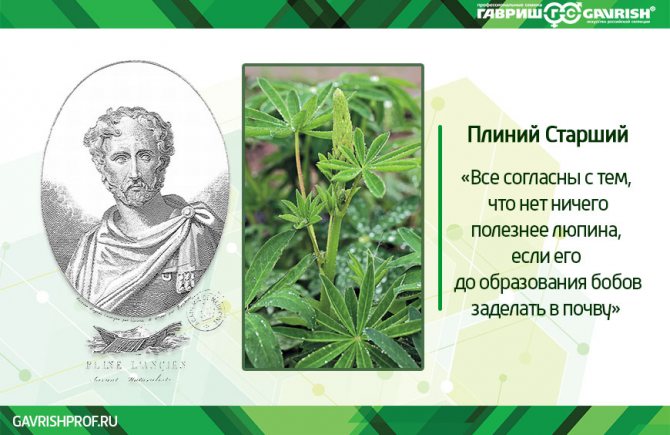

Compost is prepared from plants and fallen leaves. Plants decompose much faster than leaves.
It takes about two years for the leaf mass to decompose and turn it into compost, for chestnut leaves - three years.
The humus obtained during composting improves the structure of the soil.
Features of plants for green fertilizers
Plants such as white lupine, seradella, mustard, buckwheat, thanks to their deeply penetrating root system, which release organic acids, convert phosphorus into a soluble state, lifting it from deep soil layers.
Phosphorus accumulates in the aerial part and in the root system. And what is important, this element becomes available for plants with a shallow root system.
The action of green fertilizers, features, consistency
The effect of green fertilizers depends on the age of the plants. For example, young grasses contain a lot of nitrogen, but less enrich the soil with humus. The organic matter of young grasses decomposes quickly. Mature plants with a tough stem contain organic matter that is difficult to decompose. And they are the ones who go to the construction of humus.
Green fertilizers are recommended to be embedded in the soil during the budding period, before flowering, on light soils to a depth of 12-15 cm, on heavy soils 6-8 cm.
Green fertilizers cannot be placed in a row - mustard, rapeseed, oil radish and the main crop, all types of cabbage, plants belonging to the same family.
Liquid fast-acting and quickly-digestible fertilizers are prepared from plants for feeding cultivated plants under the root and on the leaf. For root watering, 9 parts of water + 1 part of the infusion are diluted. For spraying on a leaf, the infusion is filtered and diluted: 19 parts of water + 1 part of the infusion. Such feeding can be done every 2-3 weeks. Most vegetable, fruit and berry crops, flowers respond well to this fertilization. The exceptions are peas, beans, onions, garlic.
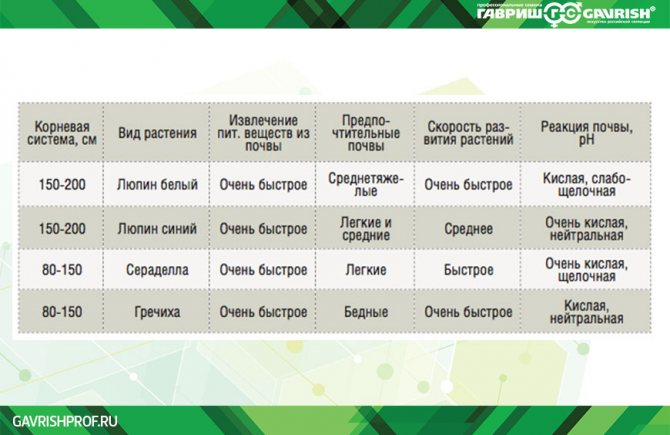

Characteristics of crops for green fertilizers
- Forage beans - a source of nitrogen, grow on heavy soils. Used in a mixture with vetch and field peas. The seeding depth is 4-6 cm, the seeding rate is 22-30 g / m2, suitable for winter sowing in areas with mild winters.
- Winter vetch is rich in nitrogen. Sown in autumn together with winter rye or winter wheat. Seeding rate 7-9 g / m2. Embedment depth 1cm.
- Spring vetch - with early sowing in spring - a good predecessor of winter cabbage, an excellent food for goats and rabbits.
- Field peas, pelushka is a cold-resistant plant. Sown in a mixture with vetch and oats at the rate of 15 g / m2.
- Mustard enriches the soil with organic matter, phosphorus and sulfur. The optimal growing time is 8-10 weeks. Good wireworm remedy. Seeding rate 4-6 g / m2.
- Buckwheat - enriches the soil with organic matter, phosphorus and potassium. It is sown in the spring (7 g / m2) and embedded in the soil in the fall. Buckwheat is used in the aisles of fruit crops.
- White clover, red - rich in nitrogen and potassium, does not tolerate acidic soils, grows in one place for 2-3 years, seeding rate 2.8 g / m2, seeding depth 1-2 cm
- Annual lupine (blue, yellow, white) is the best predecessor for strawberries. Lupine plants are rich in nitrogen, phosphorus, organic matter. Green fertilizer from it is close to manure in nutritional value. The seeding depth is 2.5 cm, the distance between plants is 5-15 cm, between rows 15-30 cm. The cut mass of lupine is embedded in the soil 8 weeks after sowing.
- Alfalfa is a perennial legume for the south. Provides the soil with organic matter, nitrogen, potassium. Seeding rate 2.5-3 g / m2.
- Rape is a cruciferous plant rich in organic matter, phosphorus and sulfur. Very picky about soils, which should be neutral in acidity and rich in humus. Seeding rate 2.8 g / m2. Rape is available in spring and winter.
- Oil radish is an unpretentious crop. Any soil and climate are suitable. The oilseed radish has a deep root system, which serves as a good loosening agent of the soil, and what is important. Plants of this culture suppress the nematode. Oilseed radish is sown in pure form 2-3 g / m2, and mixed with spring vetch at the rate of 1 g of radish + 6 g of vetch per 1 m2. When plants are embedded in the soil, the latter is enriched with organic matter and nitrogen.
- Winter rye - sown in autumn, the norm is 9 g / m2. In the spring of next year, when the plant stem reaches a height of 60 cm, the green mass is mowed and embedded in the soil, saturating it with organic matter, nitrogen, and potassium. Winter rye has a drawback. Its plants dramatically dry out the soil. In dry years, watering will be required.
- Seradella - for its cultivation, light soils with a pH reaction from very acidic to alkaline are optimal.The plants are fast-growing, with a root system that goes 80-150 cm deep. They enrich the soil with nitrogen, calcium and phosphorus. Seradella is also used for livestock feed.
- Rapeseed - undemanding to soil, grows quickly. Spring rape is sown in spring, summer or after harvesting the main crop. In the flowering phase, they are mowed, sent for composting or plowed into the soil. Winter rape is sown before winter at the rate of 1-2 g / m2 and used as a green fertilizer in spring.
- Phacelia is a fast-growing unpretentious plant. After sowing / seeding rate 8-10 g / m2 / flowers after 6 weeks. An excellent honey plant and an ideal precursor for any vegetable crop. Plants are rich in nitrogen and decompose very quickly in the soil.
Practical examples of the use of green fertilizers
1. Strawberry field 4 years old. After the final harvest of the berries: • remove the plants, • prepare the soil, • sow a mixture of vetch with winter rye before winter. • In the early spring, embed the green mass into the soil. • After 4-6 weeks, plant the cabbage, and if the next crop is root crops, then mow the green mass and send it to compost.
Vetch roots enrich the soil with nitrogen, while rye roots restore soil structure and heal the soil.
2. After harvesting the early potatoes, sow the mustard immediately. At the end of October, embed the green mass into the soil. In spring, plant onion sets or onions through seedlings.
3. In early spring, before planting potatoes, sow oilseed radish. Then embed its green mass into the soil. Such use of oil radish is not only a good natural fertilizer, but also allows you to restrain the spread of nematodes, namely, nematodes carry viral diseases of potatoes, for example, glandular spot of tubers.
It should also be noted that the use of green fertilizers has an effect not only in the form of natural feeding. It has a prolonged positive effect. The positive effect of green fertilizers lasts up to 5 years. At maximum strength, this effect is manifested for 2-3 years.
Tatyana Mikhailovna Devyaterikova, Candidate of Agricultural Sciences, scientist agronomist.
This material has been adapted for posting on the Internet. Its content may differ slightly from the printed source. Scientific and other data, methods and methods contained in the material have not been changed.
Cooking technology
Before filling the barrel with raw materials, it is necessary to find the optimal location for its location. Usually, the container is placed in the center of the garden - it is much more convenient to provide liquid feeding from weeds to all the beds that need it.
It is advisable to place a barrel for fertilizer from weeds in a sunny place, heating its contents will significantly speed up the fermentation and fermentation processes.
For the preparation of top dressing, any barrels with tight-fitting lids are used. It is best to take plastic containers - they do not corrode and will last longer.
The volume of the tank can be from 50 to 200 liters.
- Place the barrel in the desired location.
- Fill the container at least halfway with the raw material. If you have enough weed and cut grass, you can fill in a full tank, then the dressing will be as concentrated and thick as possible. Raw materials can be put in whole, but to speed up the preparation of top dressing, it is better to grind it.
- To increase the rate of preparation of top dressing from weeds and support the processes of natural fermentation, either any nitrogenous preparation, or a few drops of humate fertilizer, or 1 tablespoon is added to the barrel. urea, or 1-3 liters of waste from the toilet.
- The barrel is filled with water (but not to the brim) and closed with a lid or plastic. It is important to provide an opportunity for the release of gases actively released during the fermentation process, leaving a small gap or making holes in the polyethylene. Do not leave the barrel open, as in this case the nitrogen will oxidize and the decomposition processes will slow down.
All components of the finished fertilizer will find their application in your garden - the liquid part will serve as a nutritious feed for growing crops, and the semi-decomposed grass mass will be used for mulching cucumbers, pumpkins, zucchini, cabbage.
The video below shows in detail the process of preparing a nutritional supplement from weeds and grass. With the help of this detailed step-by-step instruction, you can repeat the algorithm on your site and provide crops in your garden with useful liquid fertilizer and mulch:
Humus from grass
Fertilizer from grass can be made not only liquid, but also in the form of compost, humus. For this, a pit is made. Sizes depend on personal needs. You can also take a large plastic container instead of a pit (it is convenient to make humus, for example, in a barrel or an old, unnecessary bathtub). The container is placed in a remote place, as the fertilizer will smell unpleasant. You should not put it in the sun, you need to look for a shade.
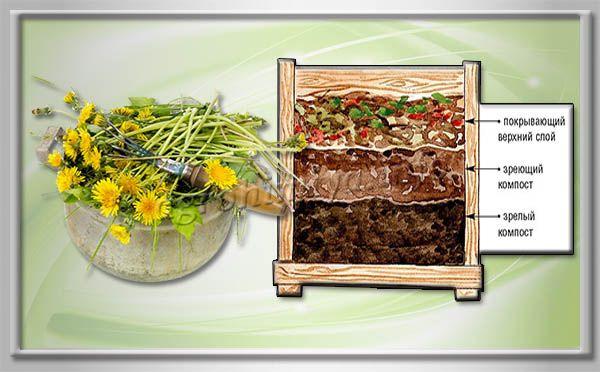

Fertilizer from grass can be made not only liquid, but also in the form of compost, humus
Earth is poured onto the bottom (a small layer). Then weed is poured. To make it rot faster, it is advisable to grind it. If time is not in a hurry, then you can put the grass in a container in one piece. In addition to grass, you can put rotten fruits, vegetables, leaves and other plant debris. The layer should be at least 30 cm! From above, the plants are covered with a layer of sawdust. On top of the sawdust, you can make another layer of grass, then sawdust again, and so on.
Rotting takes about 3-5 months, but the highest quality compost is obtained only after 2 years. If you add chicken droppings to the mass, the cooking time will be reduced by 4 times! The ready-made compost is used for fertilizing the soil, cultivated plants, and preparing liquid dressings.
Important!
If the compost is made in the fall, it will only be consumed in the spring, that is, it must overwinter. There will be high temperatures inside the pile and still need to cover it with straw and some kind of breathable insulation (burlap, agrofibre or something similar). If this is not done, the top layer may freeze and the compost will become useless.
Determine the readiness of the fertilizer
The speed of preparation of top dressing directly depends on the weather conditions and the stage of production. When a barrel is first loaded, fertilization is usually done within 2 weeks.
On hot days, fermentation and fermentation processes are most active, so this period can be reduced to 1-1.5 weeks. When re-loading the barrel with raw materials in the presence of "leaven" at the bottom, the fertilizer will be ready after 4-7 days.


The readiness of the fertilizer can be determined by a number of specific signs:
- Smell. From a container with overheated grass, a specific smell of a "barn" begins to emanate.
- Color. The liquid acquires a rich greenish-brownish color.
- Fermentation. Bubbles appear on the surface of the finished top dressing, indicating active fermentation processes.
During fermentation, plant materials decompose, releasing carbon dioxide and ammonia. Interacting with water, the latter forms ammonia - an incredibly useful compound for the soil, which is not found in compost or in cow dung.


